筑波山でごみ拾いと冒険ハイクを楽しむ研修員 Participants enjoy picking up trash and an adventurous hike on Mt.Tsukuba
2024.06.10
JICAのSDGs活動の一環として、研修員とごみ拾いをしながら新緑の筑波山でクリーンハイクを実施しました。
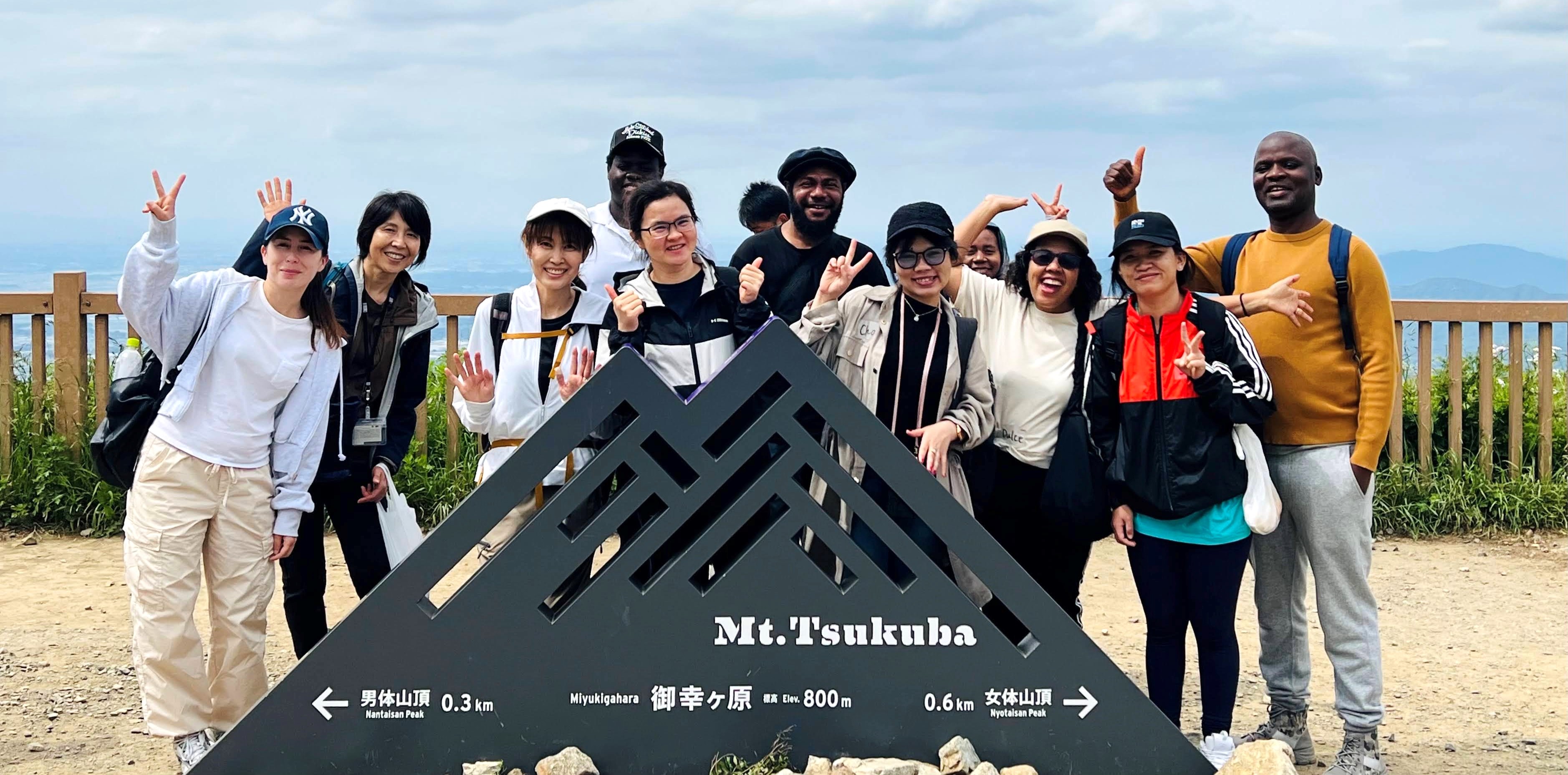
JICAでは様々なSDGsの取り組みを行っていますが、研修員福利厚生プログラムでは、ごみを拾いながら日本の自然を楽しんでもらおうとクリーンハイクを企画しました。当日はウズベキスタン、ラオス、カンボジア、ウガンダ、タンザニア、マラウイ、パプアニューギニア、東ティモールなどの研修員9名が参加しました。
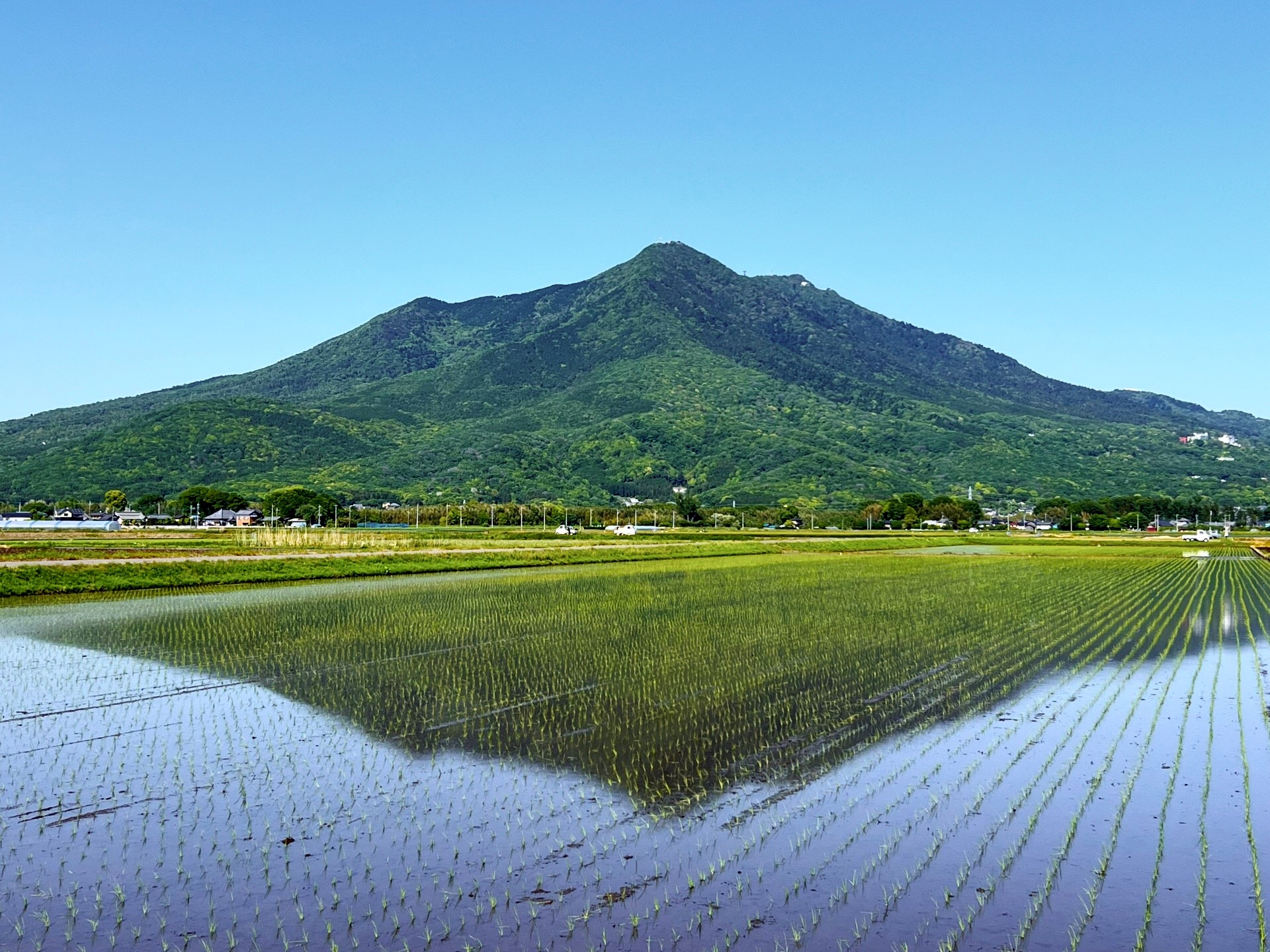
当日は曇り予報でしたが、幸運なことに青空が広がっていました。茨城に近づくにつれ緑が多くなり、筑波山の稜線が見えてきます。
関東平野に浮かぶように見える筑波山は遠くからでもその稜線がよく見え、昔から人々の心の拠り所となっています。一日に幾度もその表情が変わるため、万葉集や常陸国風土記、近代文学や絵画などでは自らの心情を映し出す山として取り上げられています。
筑波山は男体山、女体山の二峰を持つことから国生みの神である、男性神のイザナギと女性神のイザナミが祀られ、古くから人々に信仰が篤く、低山ながら日本百名山の一つにも選ばれています。
また、昔は日本やアジア各地で見られた「歌垣」という、神々の住む山へ男女が集い、互いへの想いを歌い、結ばれるという風習があり、おおらかな恋の舞台でもありました。現在は良縁や開運などのパワースポットとしても多くの人々に慕われています。
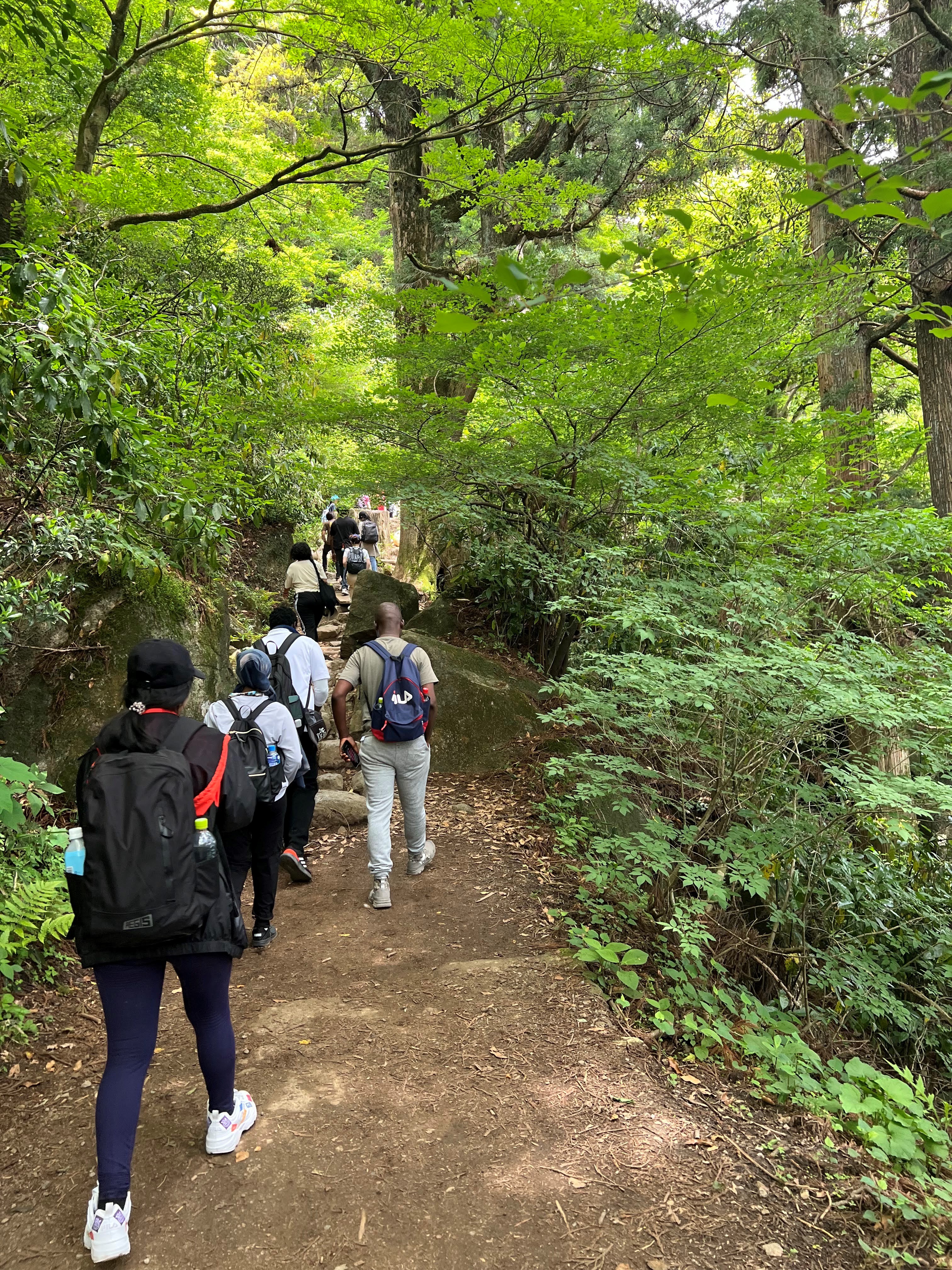
今回は筑波山神社にて、国生みの神に因んで、研修員のミッションであるより良い国造りや登山の安全を願って白雲橋コースをスタート。樹林帯を最初はゆるやかに、徐々に斜度を上げて登っていきます。
日本の大学で自国の課題の研究に取り組む研修員たちは、解放感ある自然の中で社会やシステムについて同志と闊達に話し合い、意見を交わしています。
日本で暮らして良い点、難しい点は?と聞くと、秩序がある、礼儀正しい、便利、とても安全なのが良い点、日本語が話せないのが難しいところ!と言う研修員。と言っても、日本語で話しかけると大学の日本語クラスで学んだ日本語で流暢に答えてくれます。日々の研究に語学学習に、異国での生活は大変だと思いますが、上手に息抜きしながらがんばってほしいです。
ゆっくりペースでも中々良い汗をかいて、1.5時間ほどで弁慶茶屋跡に到着。遠くにかつては海だったという霞ケ浦が見え、心地よい風が吹き抜ける東屋でひと息。
ここからは楽しい巨石エリア。「弁慶七戻り」は神々の世界と現世を分かつ石門と言われ、今にも落ちてきそうな上部の岩と、それを支える岩の迫力に驚きます。修験行場である「母の胎内くぐり」では岩をくぐり抜けて心身を浄化し、「出船入船」、「北斗岩」など数々の巨石を通っていよいよ女体山山頂へ。目の前には関東平野が一望、なんと素晴らしい景色!2時間半がんばって登ってきた甲斐がありました。
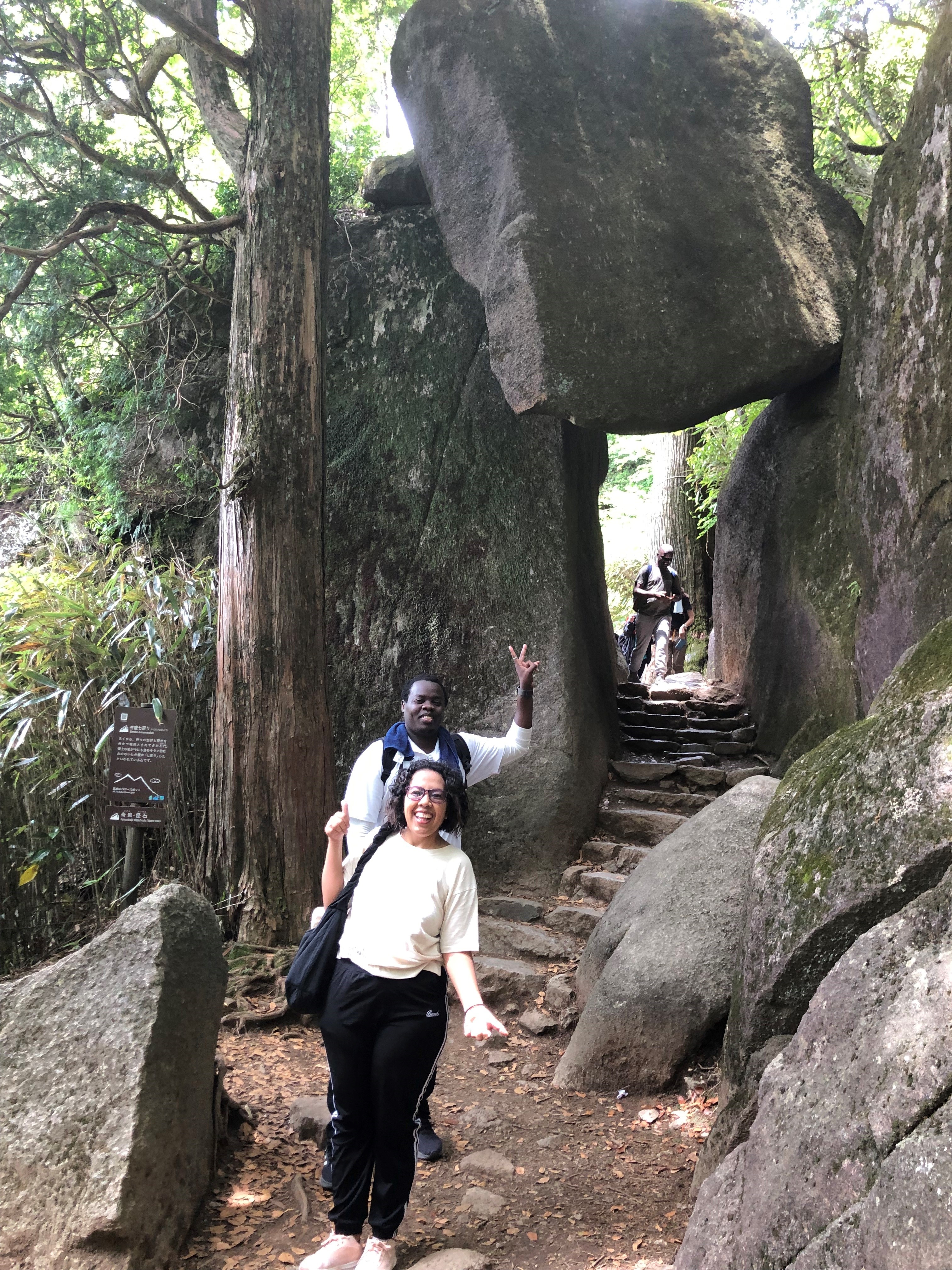
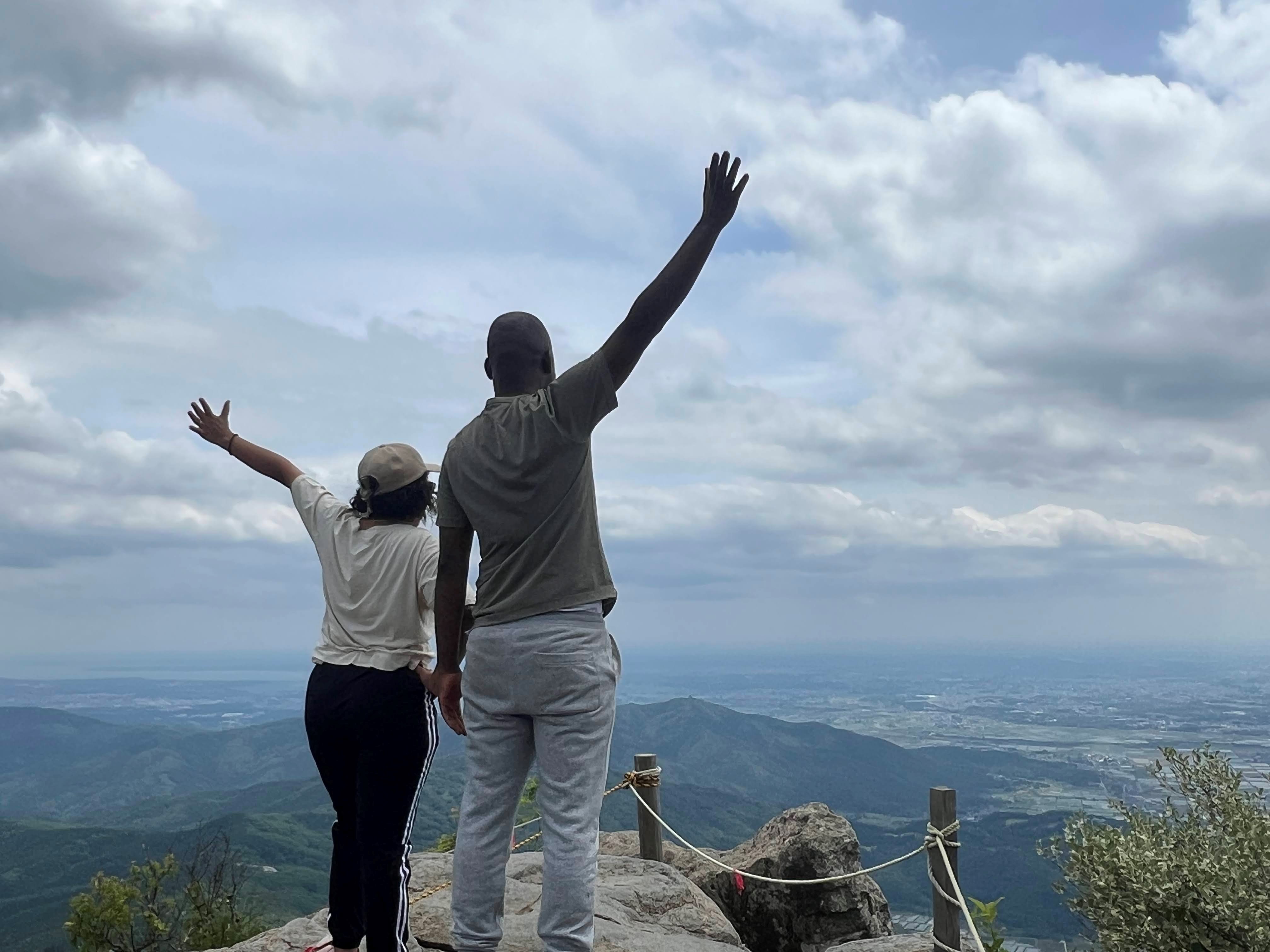
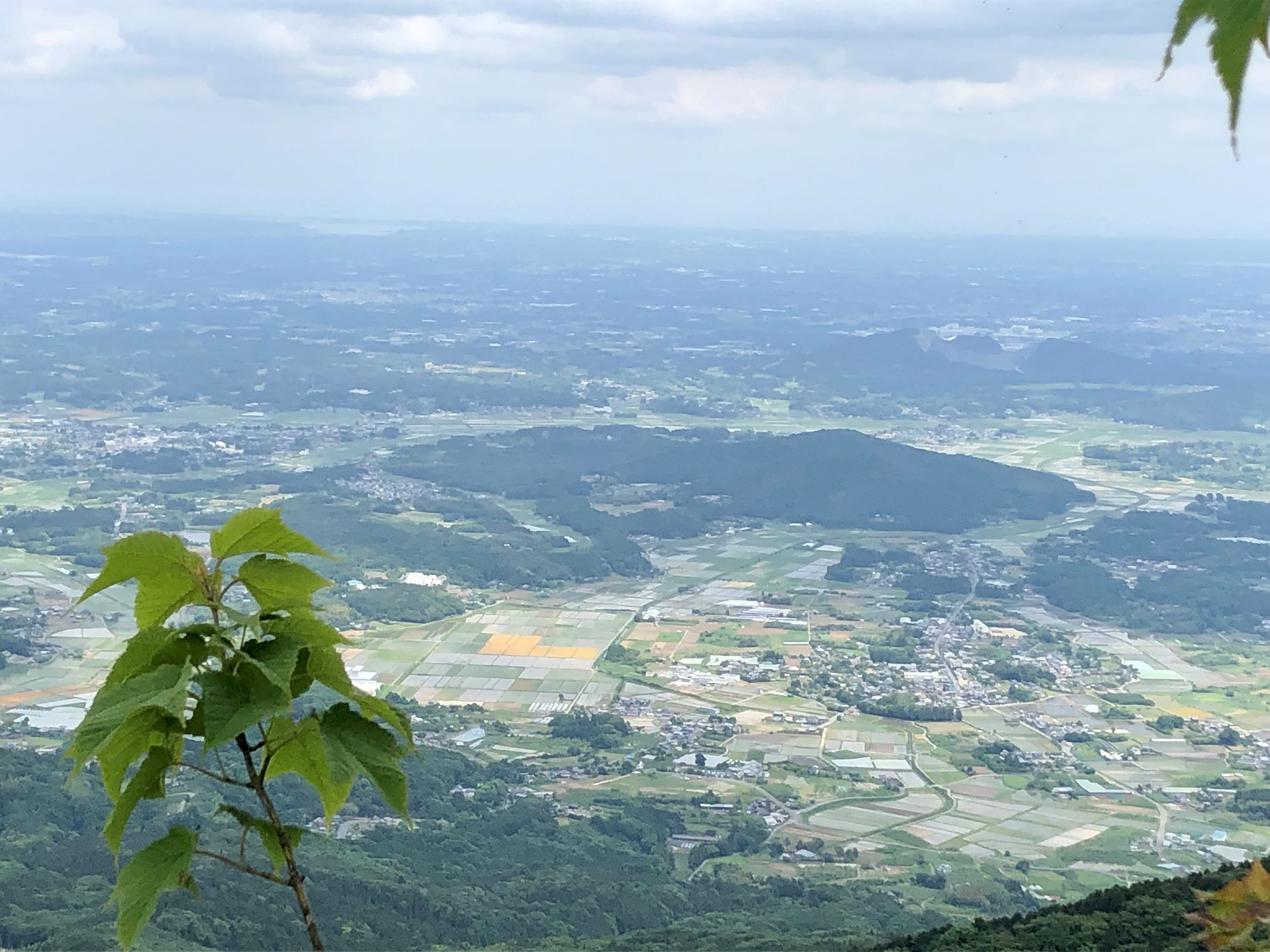
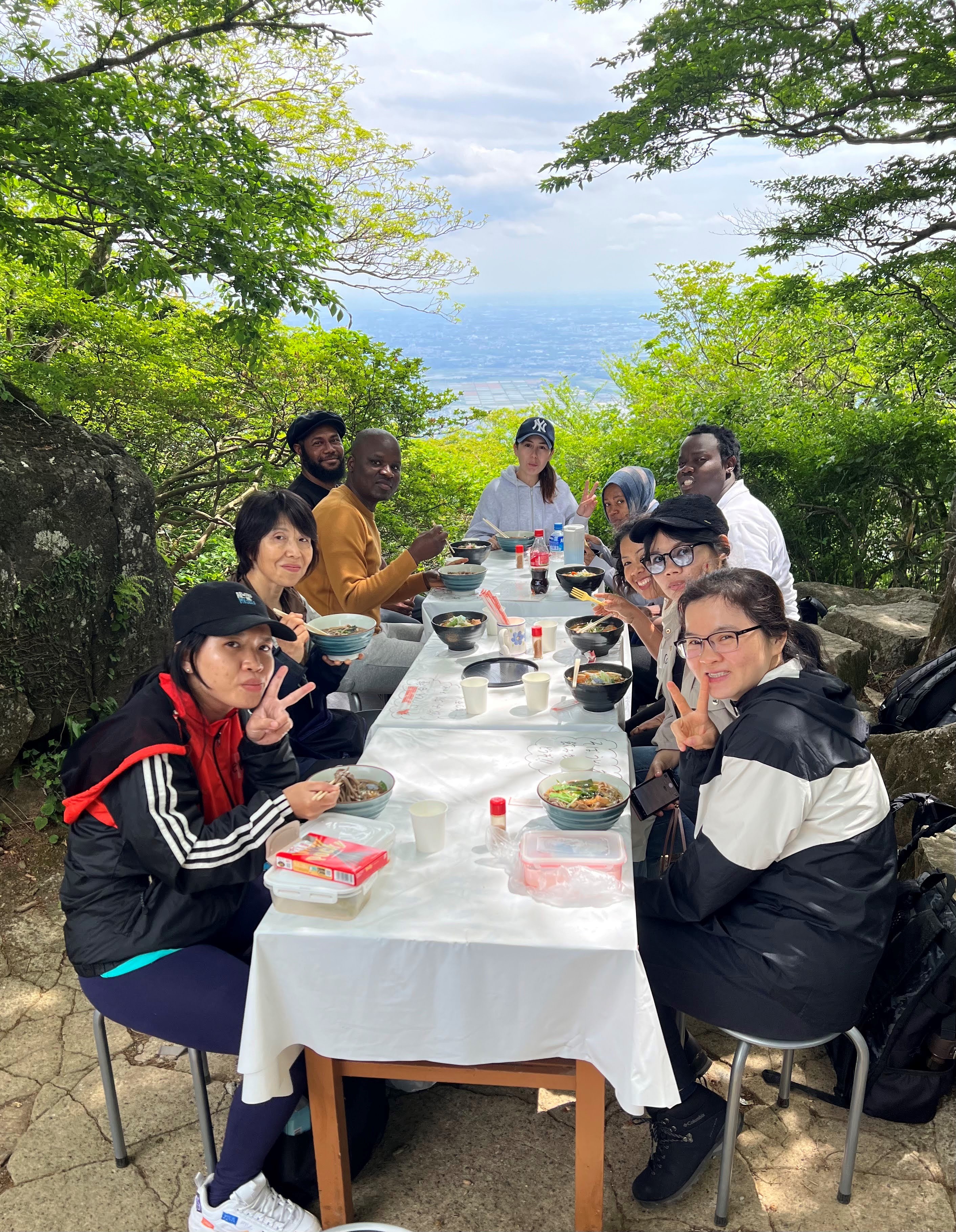
皆で感激の登頂と撮影の後は、山小屋ランチ。男体山へ渡る途中のセキレイ茶屋に立ち寄りました。ここには古びて錆び付いた大きな錨があります。なぜここに錨が..? 明治時代、筑波山を指針に漁をしていた千葉・銚子の漁師が、感謝を込めてこの大きな錨を山頂に奉納したそうです。その後銚子の海は大豊漁に恵まれたとか。自然を信仰する日本人と筑波の神さまの微笑ましいストーリーですね。
セキレイ茶屋の、蓮根入り地粉麺や地野菜を使った美味しいつくばうどんやお蕎麦をいただき、御幸ヶ原からケーブルカーで下山。
下山後は江戸時代から酒造りをする「稲葉酒造」に立ち寄りました。その名も「男女川」という、筑波山の湧水で醸した極上の日本酒や酒粕アイスに笑顔がこぼれる研修員たち。田んぼや蓮の池に囲まれた、誠意ある酒造りを続けている素晴らしい酒蔵でした。
さらに「道の駅しもつま」でお土産を買い、茨城の豊かな自然と土地の恵みを楽しんだ一日でした。
研修員のみなさま、ごみ拾いに協力いただきありがとうございました。筑波山で英気を養い、心身新たにまた研究に励んでください!
研修員のコメント
・岩だらけの道を探索し、自分自身に挑戦する経験は、素晴らしい健康的活動でした!
・自然に触れる冒険旅がとても気に入りました。この素晴らしい機会を本当にありがとうございます!
・ハイク自体はもちろん、土地の歴史を知ったり研修員同士の交流ができ、日本の人たちがハイクを通して自然を愛する姿を見れて素晴らしい体験でした。
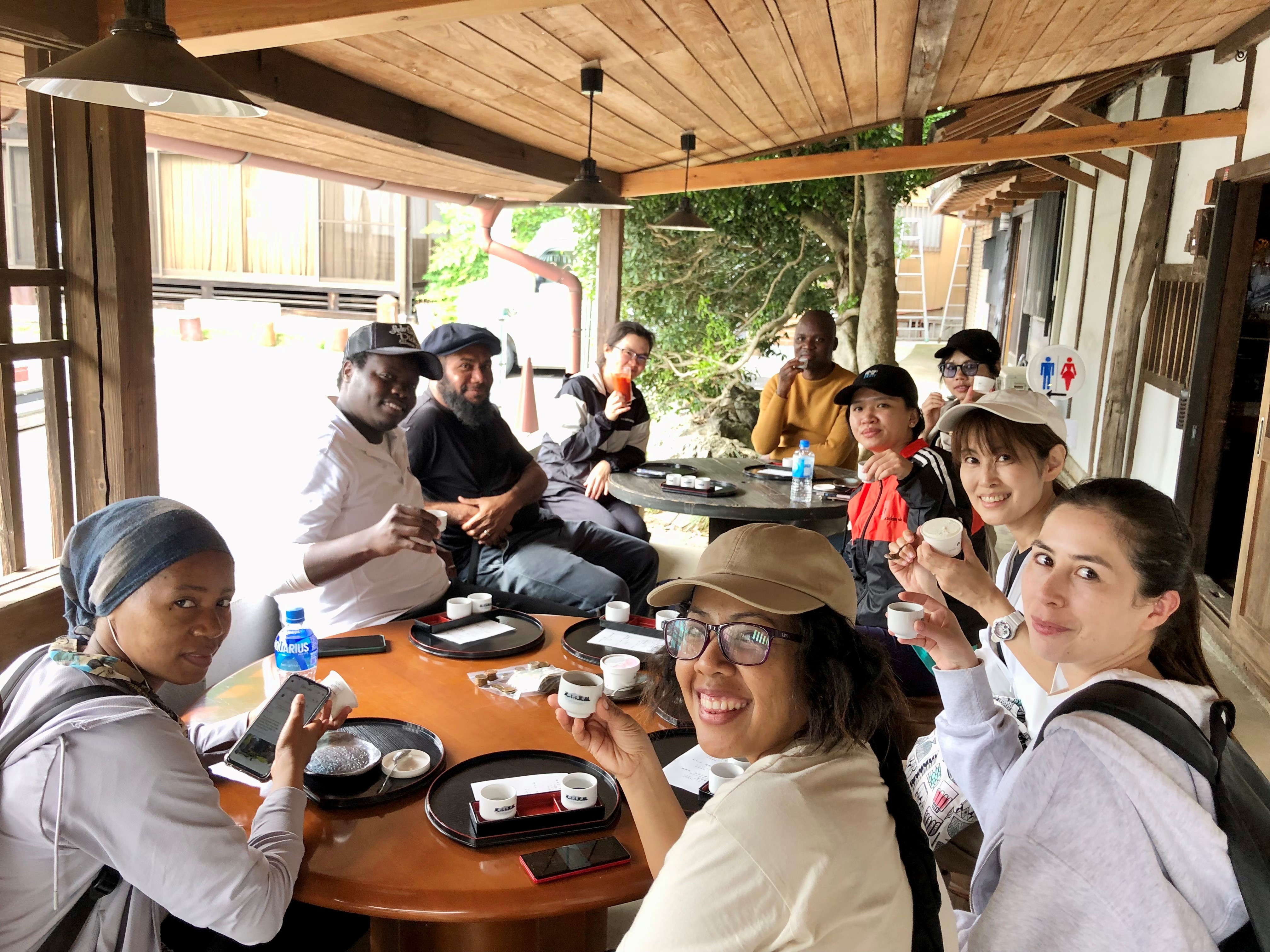
JICA is working on various SDGs initiatives, and as part of the Participants Welfare Program, we organized a clean hike for participants to enjoy Japan's nature while picking up trash. On the day, nine participants from Uzbekistan, Laos, Cambodia, Uganda, Tanzania, Malawi, Papua New Guinea, and Timor-Leste, etc. participated.
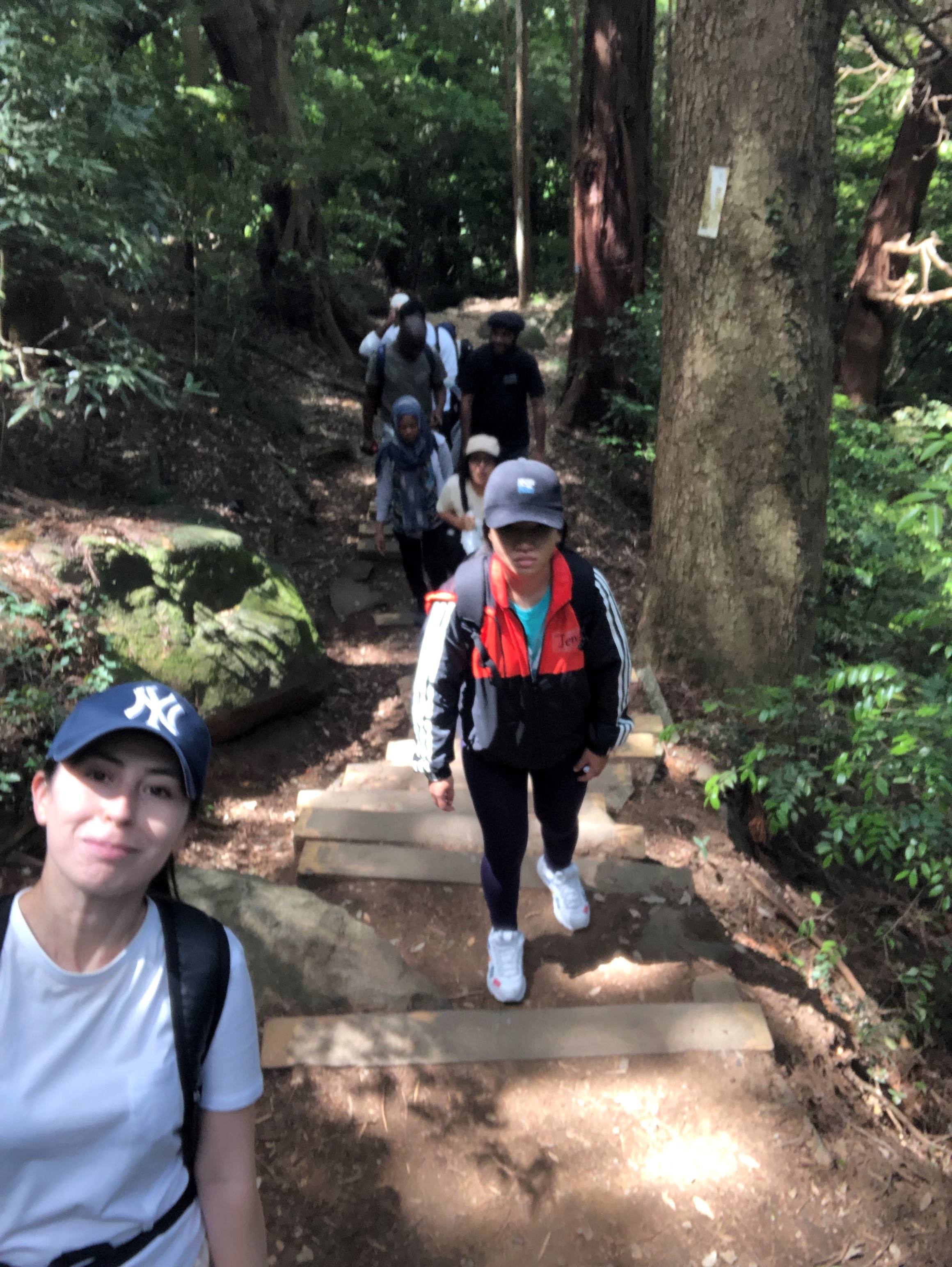
The forecast for the day was cloudy, but we were lucky to see blue skies. As we got closer to Ibaraki, the greenery increased and the ridge of Mt. Tsukuba came into view.
Mt. Tsukuba appears to float over the Kanto Plain, and its ridges are clearly visible even from a distance, it has long been the anchorage of people's hearts since old times. Since its appearance changes several times a day, it has been featured in Manyoshu (The Anthology of Myriad Leaves), Hitachi Fudoki (records of the culture and geography), modern literature, and paintings as a mountain that reflects feelings of the people.
Mt. Tsukuba has two peaks, the masculine (Mt. Nantai) and feminine (Mt. Nyotai), and the male and female deities Izanagi and Izanami, who are the birth gods of the country, are enshrined on the mountain, which has been revered by people since ancient times and selected as one of the 100 famous mountains in Japan.
It has also been a stage for generous love, as in the old days there was a custom called “Kagai” seen in Japan and other parts of Asia, where men and women would gather on the mountain where the gods lived, sing about their feelings, and get together. Today, the shrine is also a power spot for good marriages and good luck and is adored by many people.
We started the hike from Tsukuba Shrine on the Shirakumobashi trail, praying for creating a better country which is the mission of the participants and safety in climbing, in honor of the god of creation of the country.
The climb through the forest starts gently, then gradually increases in slope. Participants working on research on issues in their home countries at Japanese universities openly discuss and exchange opinions with their comrades about society and systems in the open nature.
When asked, “What are the good and difficult aspects of living in Japan?” They answered, “The good points are that it is orderly, polite, convenient, and very safe; the difficult part is that I cannot speak Japanese!” However, when I talk to them in Japanese, they respond fluently in the Japanese they learned in their university. I know that life in a foreign country must be tough, with daily research and language study, etc. but I hope that they will do their best while taking a good break.
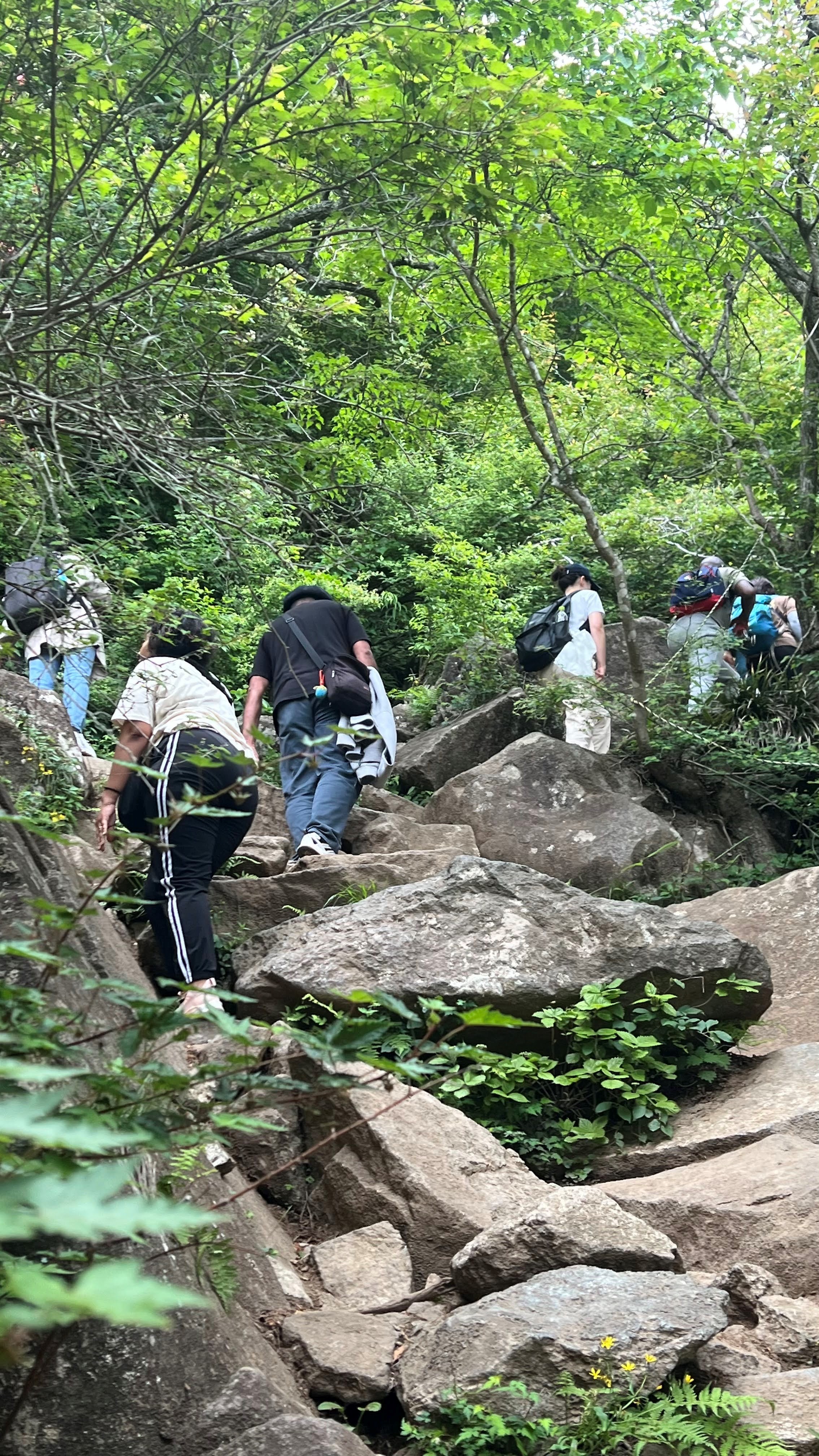
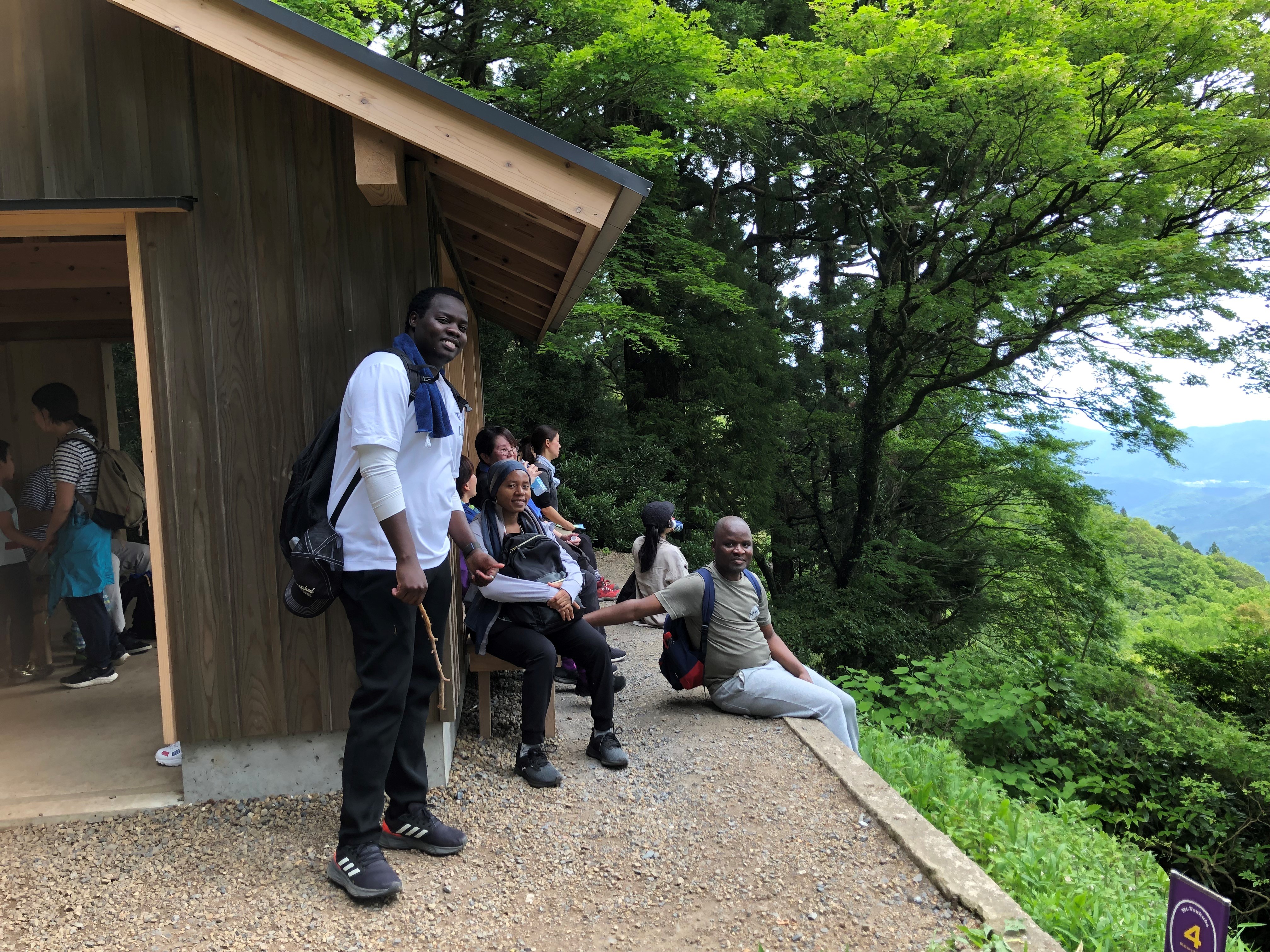
Even at a slow pace, we worked up a good sweat and arrived at the Benkei Teahouse ruins after about 1.5 hours climbing. In the distance we could see Lake Kasumigaura, which used be the sea, and the pleasant breeze was soothing.
From here we entered a fun megalith area. At “Benkei Nanamodori” rock, a stone gate said to separate the world of the gods from the present world, we were amazed at the rocks hanging on top and the rocks supporting it when we looked back. At Mother's Womb Passage, a training ground of mountain asceticism, we passed through the rocks to purify our mind and body, and then passed through numerous megaliths such as “Defune Irifune” and “Hokuto Rock” to finally reach the summit of Mt. Nyotai. When we reached the tip of the peak, we were greeted with a view of the Kanto Plain. What a magnificent view! It was worth 2.5 hours climb.
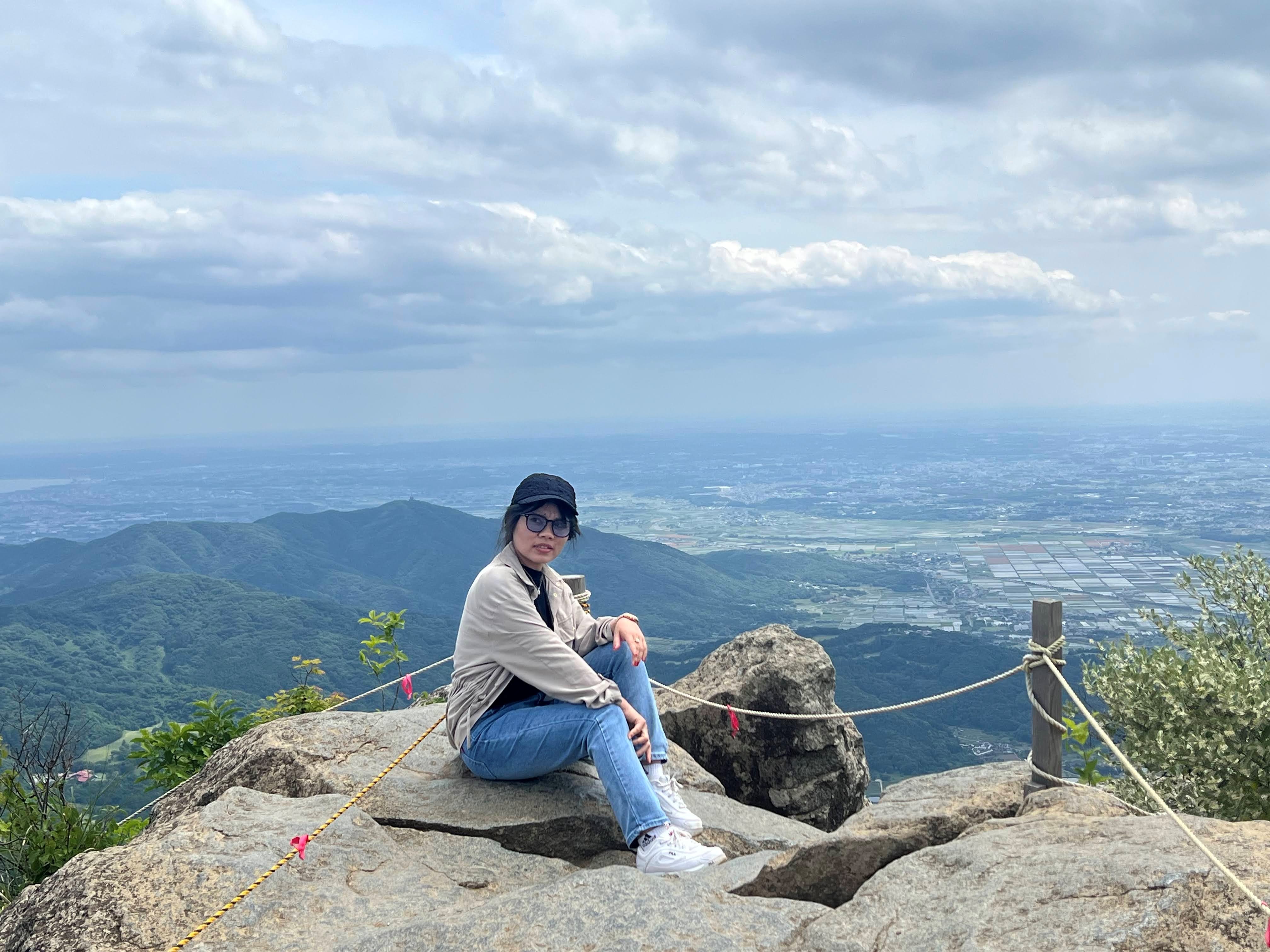
After an exciting summit and photos, we enjoyed lunch at a tea house. On the way to Mt. Nantai, we stopped at Sekirei Teahouse. There was a large, old, rusty anchor here. Why was there an anchor here...? During the Meiji period, fishermen from Choshi, Chiba, who used Mt. Tsukuba as a guide for fishing, donated this large anchor to the summit as a token of their gratitude. After that, the sea of Choshi was blessed with a bountiful catch. It is a heartwarming story of Japanese people who believe in nature and the God of Tsukuba.
We enjoyed delicious Tsukuba Udon, made with local flour noodles and local vegetables, and Soba noodles at tea house, and then took the cable car down from Miyukigahara.
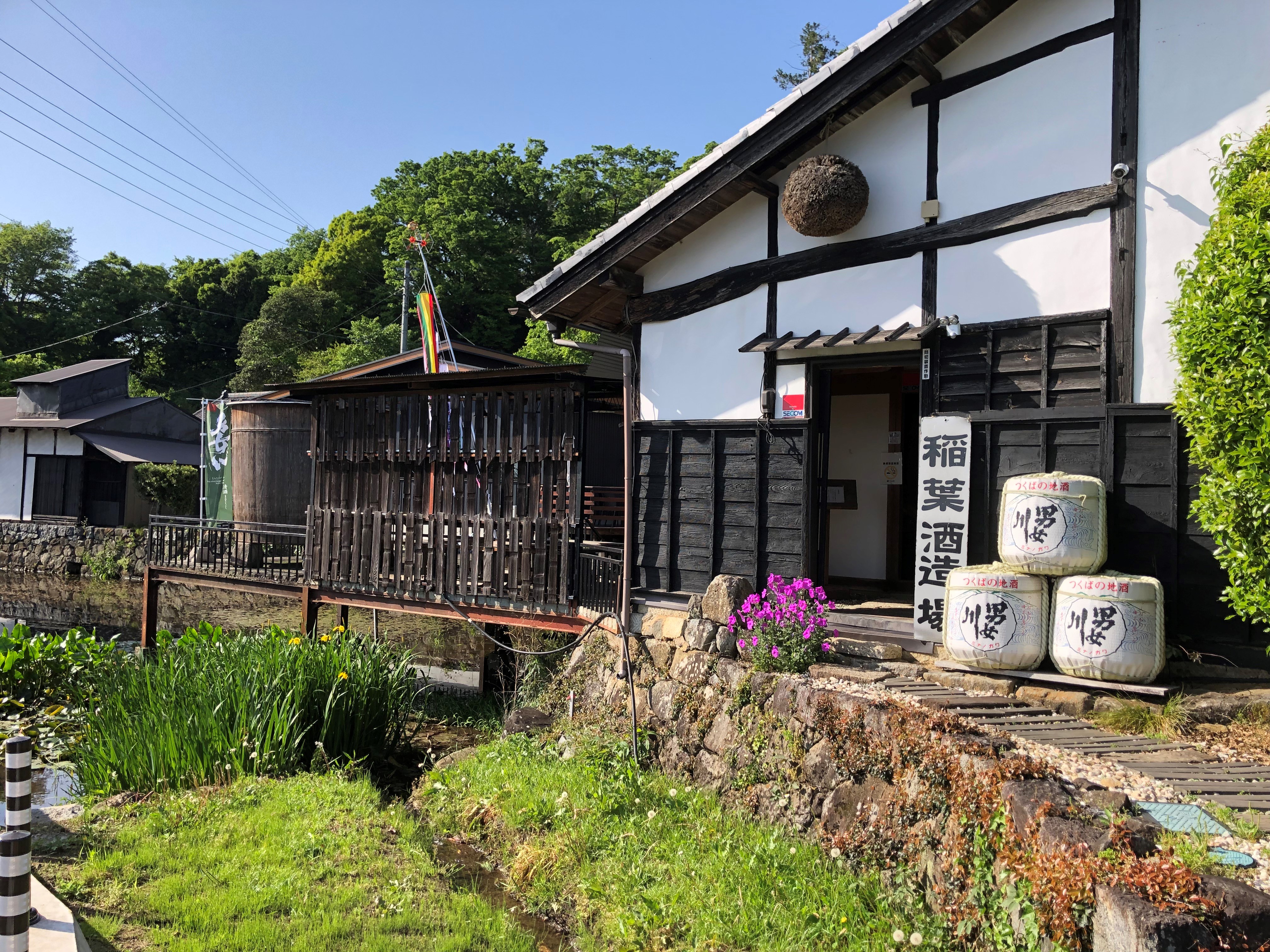
After descending the Mountain, we stopped by Inaba Sake Brewery, which has been brewing Sake with spring water from Mt. Tsukuba since the Edo period. The participants were smiling as they enjoy the finest Japanese Sake named “Minanogawa―Men and Women River“ brewed with the spring water of Mt. Tsukuba and Sake lees ice cream. Surrounded by rice fields and lotus ponds, it was a wonderful Sake brewery that continued to brew Sake with sincerity.
We also bought souvenirs at Shimotsuma Roadside Station and spent the day enjoying the rich nature and bounty of Ibaraki.
Thank you to all the participants for your cooperation in cleaning up the mountain. Now you have cultivated your spirit at Mt. Tsukuba, so please go on your study and research again with renewed your mind and body!
Comments from participants
・Great experience exploring the rocky path and challenging myself, equal a great health activity
・I really love this kind of adventure trip in nature. Thanks million to JICA for giving such a wonderful opportunity!
・It was a really nice experience. It was not only about the hiking and getting to know the history of the place, but along the way I could also experience getting to know other participants as well as to see how Japanese people and families love the nature through hiking.
scroll